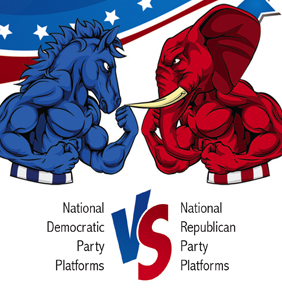
CHICAGO: Inside the Biggest Gathering of American Socialists In Decades
Written by Ryan Cooper
Things are looking up for the Democratic Socialists of America. With a membership of 25,000, it is now the largest socialist group in America since the Second World War. And last weekend in Chicago, it held its largest convention, by a considerable margin, in its history.
The event was a fascinating view into an organization that is simultaneously struggling with sudden success and looking to capitalize on fertile conditions to grow even more.
Membership has more than tripled in a year, gaining a large boost from the candidacy of Bernie Sanders and an even bigger one from the election of Donald Trump. Something like 1,500 people joined on Nov. 9, 2016, alone — about average for an entire year before now, Joseph Schwartz, a longtime member of DSA’s National Political Committee, told The Week. That sharp surge in new recruits — most of whom are fairly young — has created a fairly stark age bifurcation among members. Somewhat akin to Sanders campaign, there is an old guard of people who have been carrying the left-wing torch for years, and a recent surge of new members radicalized by the recession and the haplessness of the Democratic Party.
At the convention, the new recruits were reminded that radical politics involves a lot of tedious procedure. The parliamentary classic Robert’s Rules of Order got a severe workout as delegates accustomed themselves to formal democratic mechanisms. Delegate seats (who get voting rights) were allocated to individual chapters based on their membership, then elected by the chapter. They then spent the bulk of the convention ironing out an agenda for the next two years. They considered proposed amendments to the DSA constitution, voted on resolutions to endorse ideas and policies, and elected a new National Political Committee (NPC).
There were moments of acrimonious debate over a few topics, but ultimately most of the major proposals were adopted with large majorities. Among other things, delegates voted to create a formal harassment and grievance policy, to endorse the Boycott, Divestment, and Sanctions movement (directed at ending the Israeli occupation of the West Bank and Gaza), to leave the Socialist International, to create a labor organizing committee, and to endorse Medicare for all as a major priority.
The DSA also took paints to make up for its shortcomings, particularly its demographics. The group is quite a bit more white, male, and educated than America writ large. Convention delegates were about 40 percent female and 20 percent minority, according to DSA statistics — not exactly the “Bernie bros” of the liberal imagination, but neither as diverse as they would like. This a major point of concern for both the leadership and membership. Just as one cannot get a full measure of social justice without a structural overhaul of the American economy, one cannot achieve that overhaul without enthusiastic support from the heavily brown, black, and female working class. So in addition to endorsing thoroughgoing anti-prejudice policy, the convention used typical techniques like “progressive stack” to favor less-heard voices during debate — reflecting the DSA constitution, which says that the staff appointed by the NPC must be half women and at least 20 percent minority.
Still, the DSA is feeling optimistic.
Looking back in history, you can see why. In the 20th century before the First World War, when inequality and capitalist dysfunction was at levels comparable to today, American socialism spread by leaps and bounds — at one point even signing up a fifth of the population of Oklahoma. That brief flowering was destroyed by schisms over war jingoism and by President Wilson, whose Attorney General A. Mitchell Palmer seized on anti-Bolshevik paranoia to repress the socialist left by force. The federal government could again attempt such tactics, but today there is no Soviet Russia and no world Communist movement to fuel popular anti-Red paranoia, and no prospect of a broadly popular war that would divide the left.
It remains to be seen whether DSA can continue their upward surge, or are in for a period of retrenchment, as happened after the Iraq War and George W. Bush‘s re-election, when DSA hit its membership nadir. But the conditions for socialist organizing haven’t been so favorable in a century at least.
Article originally posted at TheWeek.com.















